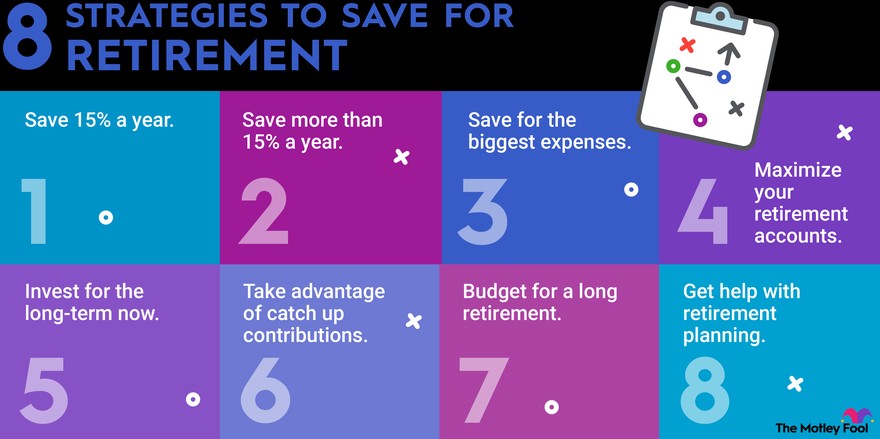Capítulo 13: Planejamento da Aposentadoria (EUA)
Objetivos de aprendizagem da lição:
Lorem ipsum dolor sit amet, consectetur adipiscing elit. Ut elit Tellus, luctus nec ullamcorper mattis, pulvinar dapibus leo.
Retirement planning in the United States involves understanding the multifaceted sources of retirement income and the role of Social Security in retirement planning. Here’s an exploration of key aspects related to retirement planning in the U.S., including Social Security and other income sources.

13.1 Understanding Social Security
Social Security Funding: Social Security is funded through payroll taxes collected under the Federal Insurance Contributions Act (FICA). Both employees and employers contribute to this fund, which then provides benefits to retirees, disabled individuals, and survivors of deceased workers. Each paycheck has a deduction (typically 6.2% from the employee and 6.2% from the employer) funding future benefits. Understanding the funding method is crucial because changes in the workforce or tax rates could affect Social Security’s long-term sustainability.
Benefits Provided: Social Security offers a safety net to retirees, providing a monthly income based on their earnings during their working years. The amount of benefit received depends on the age at retirement and the individual’s earnings record.
O average Social Security benefit for a retired worker in 2023 is approximately $1,827 per month, but this varies depending on lifetime earnings and the age at which benefits are claimed.
- Example Activity: Design a promotional flyer highlighting the benefits of Social Security. The flyer could illustrate how early retirement at 62 might result in lower benefits compared to full retirement age benefits, and how delaying benefits up to age 70 can increase the monthly benefit amount. Include visuals or charts to display the difference in benefits for various income levels.
13.2 Diversifying Retirement Income
Different Sources of Retirement Income:
- Social Security: A foundational source of income for many retirees, providing benefits based on your earnings history.
- Employer-sponsored Retirement Plans: Such as 401(k)s and pensions, which are crucial for building a retirement nest egg.
- Personal Investments: Including IRAs, stocks, bonds, and other investment vehicles.
- Continued Employment Earnings: Part-time work or consulting in retirement can supplement income.
Typical sources of retirement income also include annuities, real estate rental income, reverse mortgages, and health savings accounts (HSAs) for medical expenses.
Multiple Income Sources in Retirement: Relying on a single source of retirement income, like Social Security may not be sufficient for a comfortable retirement. A diversified income strategy incorporating employer-sponsored plans and personal investments can offer a way to maintain financial security and flexibility during retirement.
Employer-Sponsored Retirement Plans: Participating in these plans is critical, like a 401(k). Many employers offer a match to your contributions, which is essentially free money for your retirement fund. Maximizing your contribution to receive the full employer match can significantly impact your retirement savings. Employees should strive to contribute at least enough to receive the full employer match — otherwise, they are leaving free money on the table.
Health Savings Accounts (HSAs) are another valuable tool for retirement planning. HSAs allow tax-free savings for medical expenses in retirement, reducing the financial burden of healthcare costs.
Average Social Security Benefit: As of recent data, the average monthly Social Security benefit for retired workers is about $1,543. However, this amount varies based on your earnings history and the age you begin to collect benefits.
Figura: Strategies to Save for Retirement
Descrição:
The image outlines various strategies to save for retirement:
- Save 15% a year: Aiming to save at least 15% of your income annually.
- Save for the biggest expenses: Prioritize saving for significant expenses that will occur during retirement.
- Save more than 15% a year: If possible, save more than the recommended 15% to build a more substantial retirement fund.
- Maximize your retirement accounts: Take full advantage of retirement accounts like 401(k)s and IRAs.
- Invest for the long-term now: Focus on long-term investments to grow your retirement savings.
- Take advantage of catch-up contributions: If you are age 50 or older, make catch-up contributions to your retirement accounts.
- Budget for a long retirement: Plan your savings considering a long retirement period.
- Get help with retirement planning: Seek professional advice to ensure you are on the right track towards a secure retirement.
Principais vantagens:
- Saving a substantial portion of your income annually is crucial for a comfortable retirement.
- Long-term investment and maximizing retirement account contributions can significantly grow your retirement fund.
- Budgeting for a long retirement and getting professional retirement planning advice can help ensure financial security during retirement.
Aplicação de informações:
These strategies provide a structured approach towards saving for retirement. By following these guidelines, individuals can work towards building a substantial retirement fund that will support them during their retirement years. It’s essential to start saving and investing early, take advantage of retirement accounts, and consider seeking professional advice to ensure a well-planned and financially secure retirement.
13.3 Planning for Retirement
To ensure a comfortable retirement, it’s essential to:
- Start saving early to take advantage of compound interest.
- Diversify your retirement income sources to reduce risk and increase financial security.
- Understand the benefits and limitations of Social Security and plan accordingly to maximize your benefits.
- Engage in employer-sponsored retirement plans and strive to contribute enough to get the full employer match.
- Consider personal investments and savings plans like IRAs to build additional retirement savings.
Taxable vs Tax-Deferred vs Tax-Advantaged Accounts:
- Taxable accounts (like brokerage accounts) do not offer any upfront tax benefits.
- Tax-deferred accounts (like Traditional IRAs and 401(k)s) allow contributions to grow tax-free until retirement when withdrawals are taxed as income.
- Tax-advantaged accounts (like Roth IRAs) involve paying taxes upfront, but earnings and qualified withdrawals are tax-free.”
Retirement vs Estate Planning:
- Retirement planning focuses on ensuring financial independence during retirement by building savings through Social Security, employer plans, and personal investments.
- Estate planning addresses how your assets will be distributed after your death and includes tools like wills, trusts, and beneficiary designations.
13.4 Estate Planning Tools:
- Will: Legal document directing asset distribution after death.
- Living Will: Outlines healthcare wishes if incapacitated.
- Trust: Allows assets to be managed and distributed without going through probate court.
- Annuities and Pensions: Can provide income streams to support heirs.
Understanding these tools ensures your wishes are honored and can reduce taxes or legal fees for your heirs
Conclusão
Retirement planning in the USA should include a comprehensive strategy that combines Social Security, employer-sponsored plans, personal investments, and possibly continued employment earnings. Understanding how Social Security is funded and the benefits it provides is crucial, as is the importance of diversifying retirement income to ensure financial stability in your golden years.
Having a well-thought-out retirement plan helps you build a nest egg that will provide financial security and peace of mind during your retirement years.
Principais informações da lição:
Lorem ipsum dolor sit amet, consectetur adipiscing elit. Ut elit Tellus, luctus nec ullamcorper mattis, pulvinar dapibus leo.



